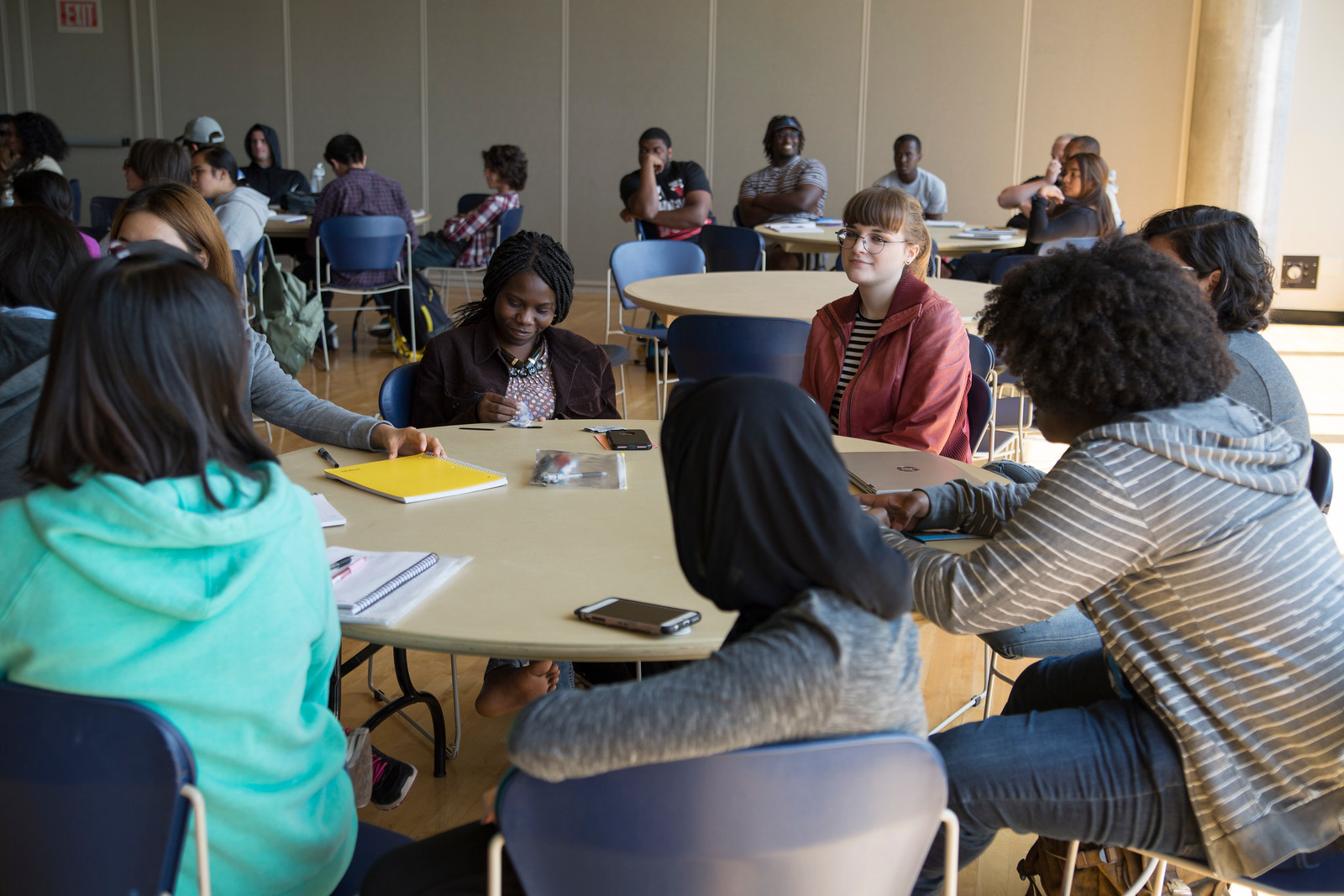At the heart of the Summer Institute (SI) back in August were 48 incoming first-year students. Each student had memorable experiences during SI, including self-proclaimed “really, really good friends” Kayla Jarppi and Ellie Fiorini, who met and bonded thanks to the program.
Jarppi and Fiorini mentioned how much they enjoyed the SI curriculum, especially the seminar-style class modeled after First-Year Studies. Jarppi expressed her enjoyment of the book Biased: Uncovering the Hidden Prejudice That Shapes What We See, Think, and Do by Jennifer L. Eberhardt, PhD, and how it helped her build a greater awareness about implicit bias and how it affects everyday life. Fiorini said that SI classes helped her get a jumpstart on how to write essays at the college level, how to prepare for an exam, and how to set up meetings with writing tutors.

Aside from classes, the students got to take part in several activities. From trips to the Fox River Mall to a Studio Ghibli film night, the extracurriculars never seemed to end. Jarppi stated that in her opinion, the best event was jewelry night, where students got together with their Program Assistants (PAs) and beaded together. To this day, she has not taken off the bracelet she made that night. As for the most rewarding activity, she reminisced about the first dinner the incoming students spent together, selecting that event for a simple reason: it was a worthwhile (if awkward) opportunity to break the ice with her future classmates. Fiorini, on the other hand, found the most meaning in the trip to the Oneida nation, where for the first time in her life, she was taught of indigenous history and culture by indigenous people themselves.
Another aspect the students got a head start on was adjusting to living on campus. Most of the students taking part in SI were placed in the dormitories they would spend the entirety of their first year living in. For some, however, this was not the case; Jarppi originally lived in Trever Hall for a part of SI but ended up having to move to Plantz Hall.
The only qualm the two had was with the lengthy workshops, which they thought of more as lectures. While unimpressed with the “intensity” of the workshops, the two did say that they were very useful, Jarppi even using evidence from the Motivation workshop in her Plato’s The Republic paper. The workshops covered life at Lawrence, including information on financial aid, the career center, and campus employment. Student services were only one topic for workshops; other workshops focused on how to practice self-care in a college setting, including getting good sleep. By the time that Welcome Week rolled around for the first-years that had not participated in SI, Fiorini went as far as to say she was “bored” of the informative lectures that were administered to the new students and ready to start classwork.
The PAs were some of the first people that the students would encounter in their SI experience. From the very beginning, the two interviewees recognized how eager to engage their PAs were; Fiorini reminisced about her PA comforting her when she was having a challenging time saying goodbye to her parents on the day they left. This small act of kindness was the first of many she, as well as the other students, would encounter.

The willingness to help the incoming first-years did not stop at easing the adjustment into their new livelihoods, the two recalled. After things started to pick up and the program was in full swing, the schedule that the new students encountered would be challenging to navigate with all the events, classes, and workshops packed into a three-week duration. Jarppi said that the PAs this year were exceptionally good at communicating with the students and helping to guide them through their action-packed days. Even while they were taking their roles seriously, the amicable PAs never sacrificed their warmness towards the students for the sake of the job; according to Fiorini, the assistant she (as well as Jarppi) was assigned to was the “perfect balance of professional mentor and friend and equal.” To this day, the two are still friends with their PA.
As well as still being in contact with their PA, the two also are still friendly with the other students they met through the institute. While differing schedules and the passage of time since SI has worn away at their overall closeness, Fiorini recognized that there was still a “kinship” between the first-year SI participants. She and Jarppi still engage in small talk with their SI classmates from time to time.
Overall, the two agreed that the Summer Institute was all around an “amazing” experience. It had such a positive impact on them, that they both plan to try and become PAs next year to “pass the torch”, as Fiorini put it, to future first-years and give them the same welcome that Jarppi and Fiorini were given.
Each had some words of wisdom for future students. Both agreed that getting to know one’s PAs was one of the biggest tips they could give. Jarppi stressed that incoming students should be as social, with both their fellow first-years and their PAs, as they can. She recommended getting to know them outside of mandatory hours, especially through trips to local restaurants, which helped them bond with the other SI participants. She added at the very end of the interview, as a word of advice, to ask Toppers Pizza about the 12-dollar large pizza they do not advertise.

